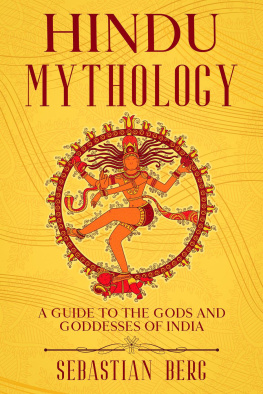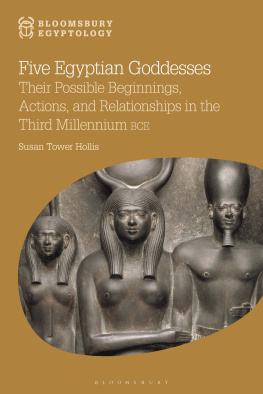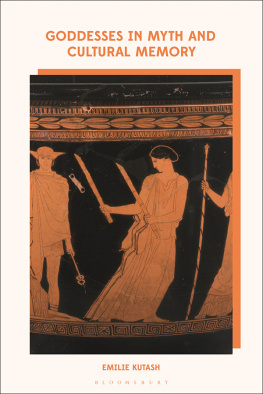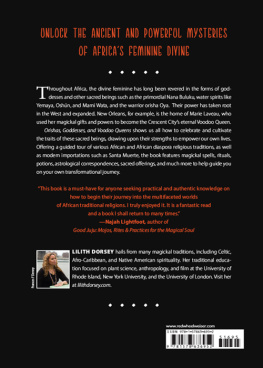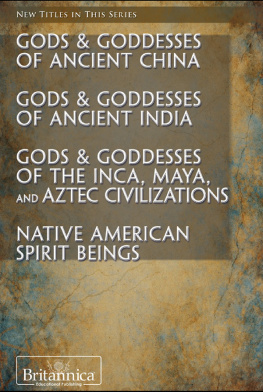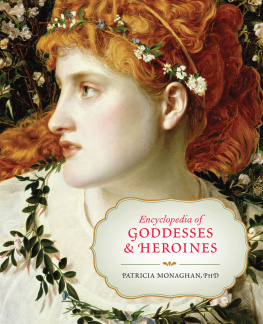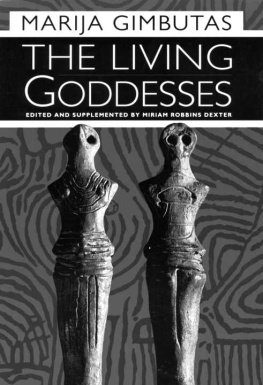Goddesses are found everywhere, but they are most at home in South Asia, which is the focus of Professor Guptos study. He has combined scholarship, theoretical astuteness and critical acumen to provide a fresh treatment of a subject of abiding interest to students of culture and the arts.
Kaiser Haq, Department of English, University of Dhaka
Goddesses of Kathmandu Valley
In South Asia goddesses are conceptualized and worshipped in a fascinatingrange of forms from cosmic beings to bacterial manifestations, from human-like appearances to creatures with animal and insect semblances. This book maps the diverse identities of goddesses through metaphors of Grace, Rage and Knowledge, and offers an in-depth insight into femininity, sexual politics, ritual worship, religion, ecology and gender. The volume explores how these deity attributes are expressed and embedded through anthropomorphic as well as inorganic forms of nature: beautiful women, multi-legged and many-armed animals, epistemic selves, demonic beings, glamorous personifications and also grotesque sub-humans.
The second edition contains an Epilogue which further explores how the discourses on Goddesses are moulded by the myth and folklore. It opens discussions on how the dynamism of Goddess cultures have been appropriated into contemporary variations of those archetypes over time. This book will be useful to scholars and researchers of religious studies, cultural studies, folklore, art, literature, sociology and gender studies, especially those interested in Nepal and Hinduism.
Arun Gupto is Principal at the Institute of Advanced Communication, Education and Research, Kathmandu, Nepal. He has been part of the faculty at the Central Department of English, Tribhuvan University. His areas of study are literary theory, postcolonial studies and South Asian studies, and his current research is on South Asian art and religion, culminating in a documentary project entitled The Art of the Lake.
Nepal and Himalayan Studies
This series will bring the larger Nepal and the Himalayan region to the centre stage of academic analysis and explore critical questions that confront the region, ranging from society, culture and politics to economy and ecology. The books in this series examine key themes concerning religion, ethnicity, language, identity, history, tradition, community, polity and democracy, as well as emerging issues regarding environment and development of this unique region.
NEPALI DIASPORA IN A GLOBALISED ERA
Edited by Tanka B. Subba and A. C. Sinha
GODDESSES OF KATHMANDU VALLEY
Grace, Rage, Knowledge
Arun Gupto
DEMOCRATISATION IN THE HIMALAYAS
Interests, Conflicts and Negotiations
Edited by Vibha Arora and N. Jayaram
SEX WORK IN NEPAL
The Making and Unmaking of a Category
Lisa Caviglia
STATE, SOCIETY AND HEALTH IN NEPAL
Madhusudan Subedi
CONFLICT, EDUCATION AND PEOPLES WAR IN NEPAL
Sanjeev Rai
GODDESSES OF KATHMANDU VALLEY
Grace, Rage, Knowledge
Second Edition
Arun Gupto
For more information about this series, please visit http://www.routledge.com/Nepaland-Himalayan-Studies/book-series/NHS
Goddesses of Kathmandu Valley
Grace, Rage, Knowledge
Second Edition
Arun Gupto
Second edition published 2018
by Routledge
2 Park Square, Milton Park, Abingdon, Oxon OX14 4RN
and by Routledge
711 Third Avenue, New York, NY 10017
Routledge is an imprint of the Taylor & Francis Group, an informa business
2018 Arun Gupto
The right of Arun Gupto to be identified as author of this work has been asserted by him in accordance with sections 77 and 78 of the Copyright, Designs and Patents Act 1988.
All rights reserved. No part of this book may be reprinted or reproduced or utilised in any form or by any electronic, mechanical, or other means, now known or hereafter invented, including photocopying and recording, or in any information storage or retrieval system, without permission in writing from the publishers.
Trademark notice: Product or corporate names may be trademarks or registered trademarks, and are used only for identification and explanation without intent to infringe.
First edition published by Routledge 2016
British Library Cataloguing-in-Publication Data
A catalogue record for this book is available from the British Library
Library of Congress Cataloging-in-Publication Data
A catalog record has been requested for this book
ISBN: 978-1-138-58988-9 (hbk)
ISBN: 978-0-429-49133-7 (ebk)
Typeset in Goudy
by Apex CoVantage, LLC
For
Rajlokkhi Devi, Ma, Baba, Soma
Pallabi, Bibhushana, Pushpa, Salil and my students!
Contents
Guide
Arun Guptos insightful and learned book Goddesses of Kathmandu Valley grew out of his lifelong interest in religions iconography and the mythical, religious and cultural practices associated with the intriguing figure of the Devi. I have been witness to a phase of Aruns relentless archival work, which yielded a trove of materials, from esoteric to familiar, from the Vedic to folk, which he then studied with the zeal of a social anthropologist and a culture critic combined. I remember our extended discussions in which Arun was usually the speaker, which often revolved around his search for a theoretical framework. Arun has had the privilege of being schooled in theory by Prof. Sreedhar Lohani, a pre-eminent Nepali scholar who taught at Tribhuvan University. Theory gave Arun both the confidence to take a methodical approach to his subject, interrogate and investigate existing textual practices as well as juxtapose texts for both intertextual and deconstructive readings. Goddesses offers such a compelling account of the Devi in all her manifestations mainly because Arun has chosen to organize his content within a discursive frame which places equal emphasis on the hermeneutic, semiotic, descriptive and interrogative. From a close study of wisdom literature connected with the goddesses and personal accounts of devotees to critiquing entrenched views about patriarchy or the operation of binaries (such as male-female) in constructing the narratives about the goddesses, the books theoretical frame accommodates a diverse range of points of view. As a result the book is at the same time scholarly and personal and explores the historical-mythical dimensions of the goddesses as well as their symbolic capital that energizes devotees across regions.
I particularly applaud the arrangement and organization of the chapters of Goddesses around Aruns main focus which is a study of the goddesses in terms of their threefold attributes of Grace, Rage and Knowledge and subsequently, their relation with Beauty. The Hindu pantheon is believed to contain more than thirty million gods and goddesses who come in myriad forms from those of insects, trees and stones to the truly divine. Hinduism follows a caste system, which, until half a century ago, was quite rigid and patriarchal. Still, there are powerful goddesses and godmothers who are venerated with equal devotion and passion as their male counterparts. Aruns first task has been to find out why. He begins by investigating the links between women and nature or prakriti, which is recognized as a feminized entity in all the holy texts he mentions (the Vedas , Upanishads and the Puranas ). Avoiding what he believes to be the pitfalls of eco-feminism (which considers both women and nature as victims of patriarchal domination), Arun focuses rather on the veneration and passion the mother figure evokes as both prakriti and prithivi or earth, and her association with nature in terms of nurture, compassion and preservation. Nature is also invested with human attributes and Arun shows how nature and women are linked in terms of corporeality and desire.


